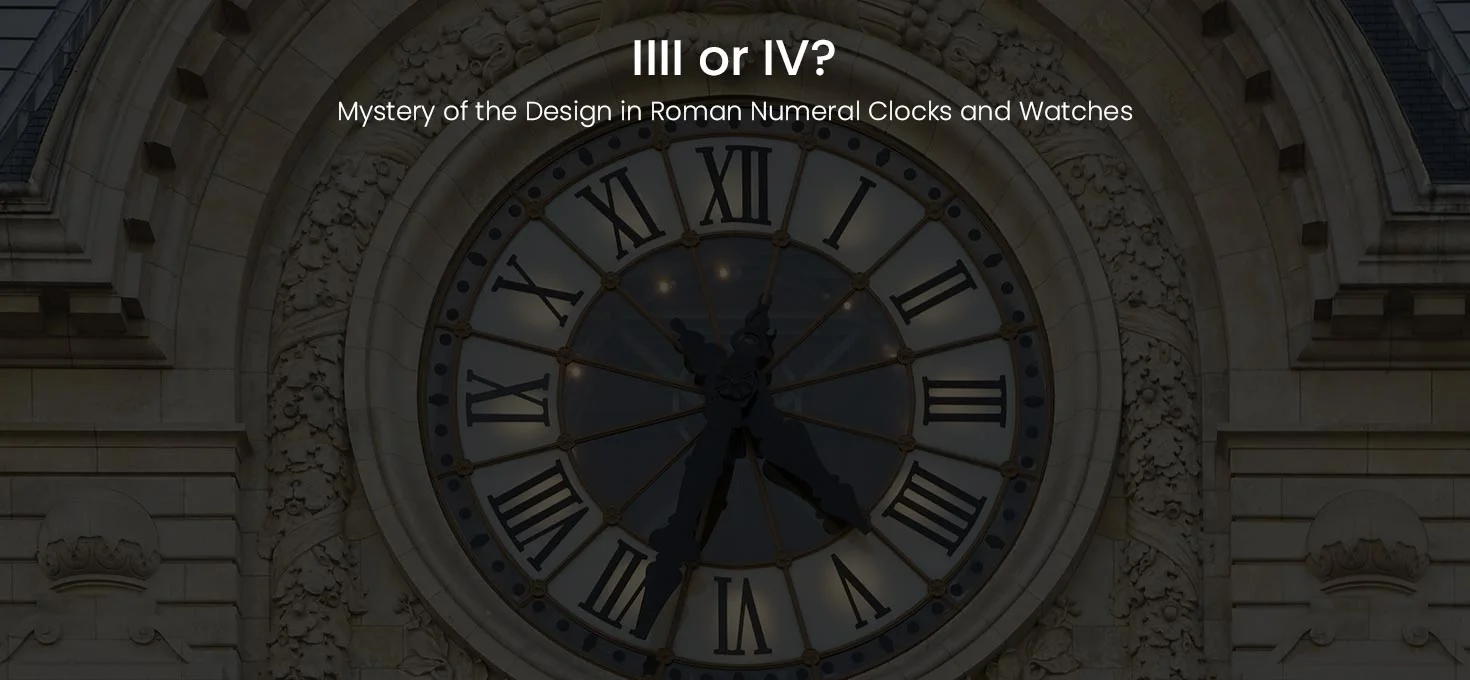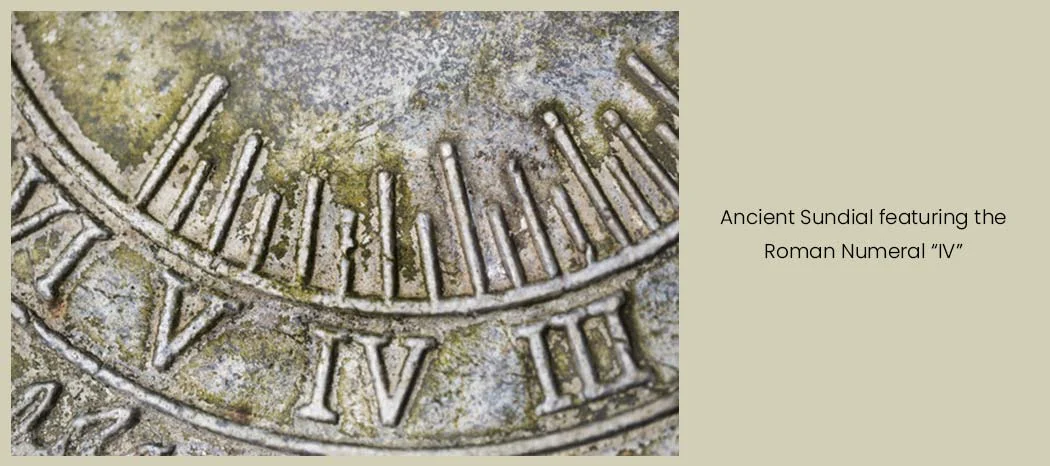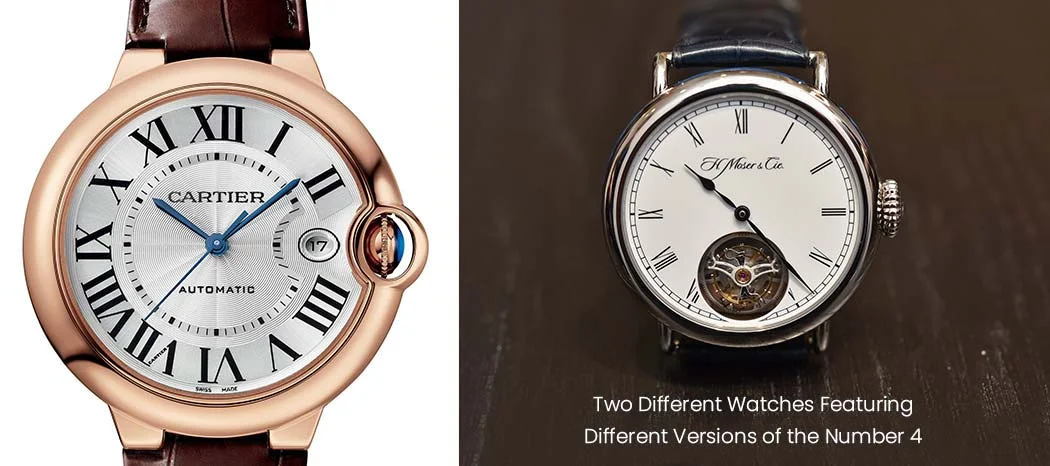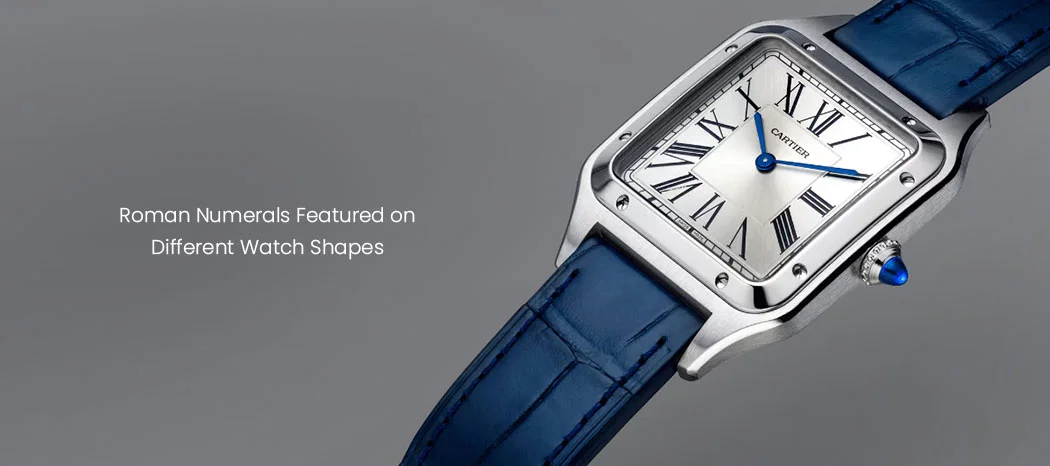 Reading Time: 7 minutes
Reading Time: 7 minutes
Have you ever wondered why clocks and watches often use the Roman numeral IIII instead of IV to represent the number four? While this might seem like a minor detail, it’s a question that has puzzled many people for centuries. Why this peculiar inconsistency? The answer lies in a complex interplay of historical, aesthetic, and practical factors that have shaped the design of clocks and watches over time. Let’s delve into the history and potential explanations for this peculiar practice of using different ways of depicting numbers in roman numeral watches.
The Roman Numeral System: A Brief Overview

The Roman numeral system, an ancient system of counting and writing numbers using letters of the Latin alphabet, has left its mark on various aspects of modern life. One of the most enduring examples of this influence can be found on the faces of clocks and watches. The use of Roman numerals to denote the hours has become a standard practice, adding a touch of classic elegance to these timekeeping devices.
The Roman numeral system originated in ancient Rome and was used throughout the Roman Empire. It is based on seven letters: I (1), V (5), X (10), L (50), C (100), D (500), and M (1000). These letters can be combined in various ways to represent different numbers. For example, IV represents four because I (1) is placed before V (5), indicating subtraction.
The adoption of Roman numerals on clock faces can be traced back to the medieval period when clocks were primarily mechanical devices used in public spaces. The use of Roman numerals may have been influenced by several factors, including Religious symbolism, mythology, and traditions.
The Roman Numerals on Watch Faces: A Long Standing Tradition

The adoption of Roman numerals on clocks and watches back to the go long back in the history, especially during the medieval period and was likely influenced by several factors: their religious symbolism, as they were often used in religious texts and documents, and their association with the Church; their aesthetic appeal, as the Roman numeral system offers a distinctive and elegant appearance; and their simplicity, as they are relatively easy to read and understand. Over time, the use of Roman numerals on clocks became a standard practice, with the numerals I, II, III, IV, V, VI, VII, VIII, IX, X, XI, and XII commonly used to represent the hours. These numerals are typically arranged in a circular pattern on the clock face, with XII at the top and VI at the bottom.
The IIII Enigma: Potential Explanations

When representing numbers smaller than ten, Roman numerals employ a subtractive notation, where a smaller number placed before a larger number indicates subtraction. For example, IV represents four because I (one) is placed before V (five), signifying five minus one. This subtractive notation is a unique feature of the Roman numeral system that distinguishes it from other ancient numeral systems. However, there is one notable exception to the subtractive notation rule: the number four. While it can be written as IV, following the subtractive notation, it is also commonly written as IIII, using the additive notation. This alternative representation is a historical anomaly that has intrigued scholars for centuries.
While there are various explanations for the different ways to represent the number ‘4’ in Roman numerals, our primary focus is on why the majority of watches worldwide use ‘IIII’ to denote this number.
- Aesthetic Appeal and Popularity: There are numerous theories, perhaps the most likely of all to why Roman numeral watches use ‘IIII’ rather than ‘IV’ for stylistic reasons only. An example of a more pleasing arrangement of ‘IIII’ is that it displays parallel straight line that are smooth and well balanced. It is not difficult to appreciate that this aesthetic appeal most probably was useful during the early day of clocks in which the looks of the clocks were in fact considered one of the more crucial factors. For instance, looking at the images of roman watches of the middle ages, one would realize that they were ornamented with carving, gilding among other things. In such beautiful clocks the use of ‘IIII’ would have blended well in the general look and appearance of the clock and it would have enhanced the beauty of the timepiece. Also, since ‘IIII’ is symmetrical, one may have considered it represent balance, harmony, and order, which were appreciable cultural values in many cultures.
- Longstanding Notions and Traditions: The other theory hold that the use of ‘IIII’ on roman numeral watches is associated with the history of the Roman numerals. Old Romans regarded the number four to be unlucky or to have a negative connotation. Although this superstition may not be practiced in the present time, it could also be that use of the ‘IIII’ was an attempt to avoid any negative energy that could be associated with the number. Furthermore, It might be connected with the Roman mythology. The Roman supreme god on the pantheon which specializes in this sky and thunder is Jupiter and was spelled ‘IVPPITER’ in Latin. Thus, phrase ‘IIII’ may have been used instead of ‘IV’ to avoid angering or offending Jupiter. And even though ancient roman watches and watchmaking rules were no longer in use with the arrival of pocket watches, perhaps the ’IIII’ was retained to honor the tradition and beliefs that have been followed ever since the dawn of time.
- The Traditional Loop: The use of ‘IIII’ on clocks may simply be a result of tradition. Once the practice became established in early clockmaking, it was likely continued for generations, even as other aspects of clock design evolved. This phenomenon, known as “traditionality,” can be a powerful force in shaping cultural practices and customs. In the case of watchmaking, the use of ‘IIII’ may have become so ingrained in the design of timepieces that it was difficult to change. Even as clockmaking technology advanced and new materials and techniques became available, the traditional Roman watches persisted because of familiarity and general acceptance by the public. Surely, there are exceptions and the decision to use or not to use roman numerals on watch faces totally depends on the watchmaker.
- Manufacturing Advantage: Both aesthetic and historical references for the use of ‘IIII’ on roman numeral watches are quite logical but practical kind of implication can be found in the process of metal type casting as well. Think that if the numerals are represented by the symbols and were made of metal rather than painted or cut out then using ‘IIII’ and ‘VIIII’ instead of ‘IV’ and ‘IX’ would have proved easier on the manufacturing side, especially during the earlier days when there were no other advanced technology to craft watches. In other words, when arranging the numbers additively that is when a number is formed by adding a smaller numbers it is possible to produce the numerals I, II, III, IIII, V, VI, VII, VIII, VIIII, X, XI, XII with a moderate number of molds. With a single basic mold the numerals I, II, III and IIII can be made while the numerals VI, VII, VIII and VIIII can also be made with another basic mold. This simplifies the manufacturing process as well as may curb the costs.
Visual Balance in the Watchmaking World

The most widely accepted explanation for the use of ‘IIII’ instead of ‘IV’ on clocks and watches is related to aesthetic balance and practical considerations. Since clocks typically display 12 hours, using ‘IIII’ creates three distinct areas on the dial: one with only ‘I,’ one with ‘V,’ and one with ‘X.’ This balanced arrangement is visually appealing and contributes to the overall harmony of the clock’s design.
Besides, ‘IIII’ also makes sense in terms of the look and feel – and it also helps read more easily when it is turned the wrong way up, which is how many modern wristwatches are designed. A form of ‘IIII’ is best understood and easily distinguishable from other numerals because of its symmetrical structure and is not likely to be twisted or turned right or left in another view. This is especially the case with the watches that are worn on the wrist and which may be observed at different angles during the day. In this way, usage of ‘IIII’ in the Roman numeral form, clock makers get an opportunity to create something more beautiful and functional and thus aesthetic, as well as readable. This is probably why symbol ‘IIII’ is currently used to represent the number four when displaying time on clocks and watches globally.
The use of ‘IIII’ instead of ‘IV’ on clocks and watches is a fascinating historical curiosity that has intrigued people for centuries. While the exact reasons for this practice may never be fully understood, the various theories offer valuable insights into the cultural, aesthetic, and practical factors that influenced the design of roman watches and its modern iterations. Whether it was due to aesthetic preference, historical superstition, or practical considerations, the choice to use ‘IIII’ was a significant decision that has had a lasting impact on the appearance and functionality of clocks and watches. As we continue to explore the history and evolution of timekeeping devices, the mystery of ‘IIII’ will undoubtedly remain a topic of interest and fascination.
KAPOOR WATCH COMPANY:
Kapoor Watch Company is a renowned retailer of luxury Swiss watches in India. With an extensive catalog of world-renowned brands like Cartier, Bulgari, Chopard, and Hublot, Kapoor Watch Company offers a diverse selection of timepieces to suit every taste and style. Whether you’re seeking a classic, elegant timepiece or a bold, modern design, Kapoor Watch Company showcases a vast array of options to choose from. Visit us at the Kapoor Watch Co. website OR Visit Kapoor Watch Co. Stores to check us out.
The post IIII or IV?: Mystery of the Design in Roman Numeral Clocks and Watches appeared first on Kapoor Watch Co. | Blogs.






